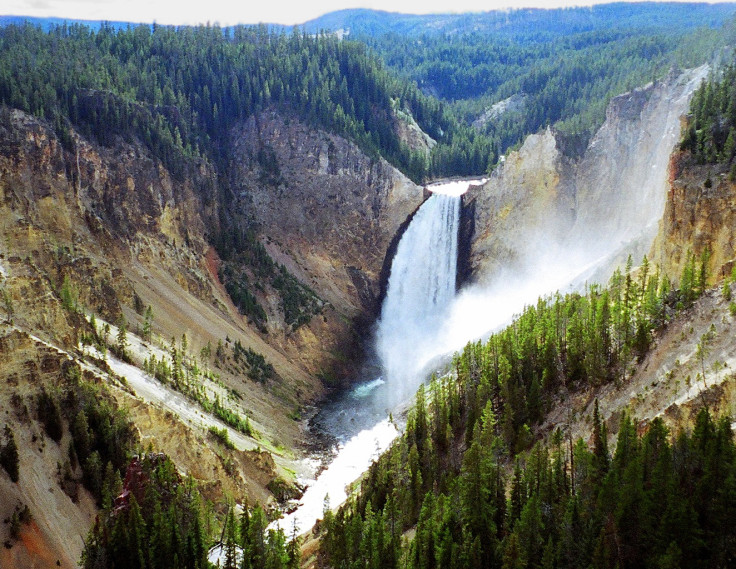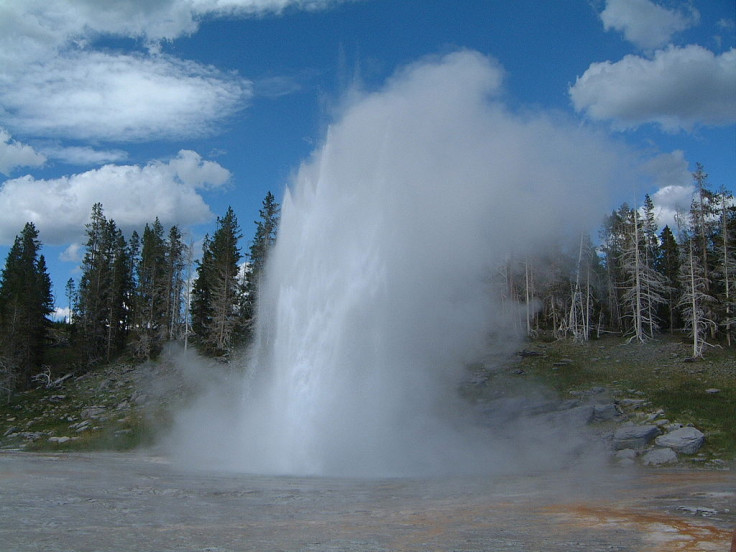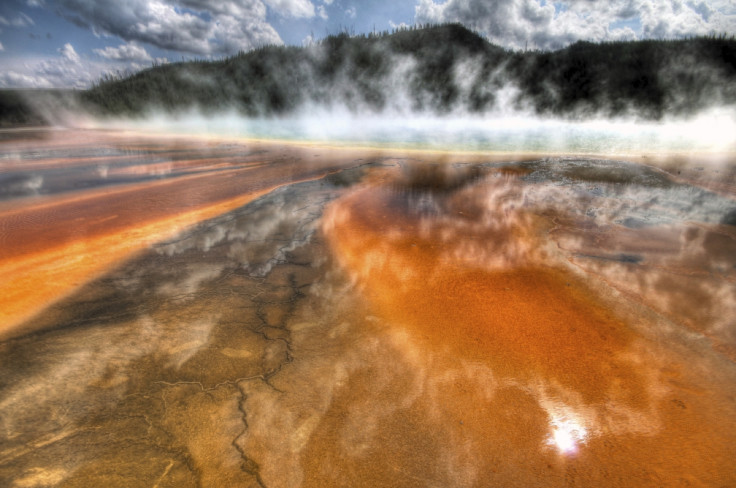What Will Happen if Yellowstone Supervolcano Erupts?
Ash would blanket most of the US, disrupting crop producing and causing widespread respiratory problems.

The current risk of Yellowstone supervolcano erupting in the near future is extremely low. The probability of a massive eruption over the next year is calculated to be one in 730,000.
How would the US be affected if the supervolcano at Yellowstone National Park erupted? That's the question scientists have been considering in the journal Geochemistry, Geophysics, Geosystems.
Experts from the US Geological Survey said while the chance of an eruption remains "very low", it has developed a computer model to simulate the distribution of volcanic ash following a "hypothetical large explosive eruption at Yellowstone".
It said people frequently ask what would happen if Yellowstone erupted and results concluded an event of this kind would leave most of the US covered in a blanket of ash, with some areas buried in over a metre of the dust.
The report, Modeling ash fall distribution from a Yellowstone supereruption, provided simulations of an eruption that lasted three days, one week and one month. All produced 330km of volcanic ash. Findings showed that expansion of the umbrella cloud produced was capable of pushing ash as far as 1,500km.
Researchers found that during very large eruptions, ash is transported by a fast expanding umbrella that leads to wide distribution, meaning most of the US would be covered in it, even if it was only a fraction of an inch.

"In essence, the eruption makes its own winds that can overcome the prevailing westerlies that normally dominate weather patterns in the United States," said USGS geologist Larry Mastin, the first author on the manuscript.
Explaining the long-term effects of the ash, the authors wrote: "North America's highest population density lies along its coastlines. Deposit thicknesses on the coasts from nearly all simulations is millimetres to a few centimetres.
"Thicknesses of this magnitude seem small but their effects are far from negligible. A few millimetres of ash can reduce traction on roads and runways, short out electrical transformers and cause respiratory problems.
"Ash-fall thicknesses of centimetres throughout the American Midwest would disrupt livestock and crop production, especially during critical times in the growing season.
"Thick deposits could threaten building integrity and obstruct sewer and water lines. Electronic communications and air transportation would likely be shut down throughout North America. There would also be major climate effects."

Concluding, the researchers said there is no indication that Yellowstone will erupt in the near future.
"Over the past two million years, trends in the volume of eruptions and the magnitude of crustal melting may signal a decline of major volcanism from the Yellowstone region," they said.
"These factors, plus the 3-in-2.1-million annual frequency of past events, suggest a confidence of at least 99.9% that 21st-century society will not experience a Yellowstone supereruption.
"But over the span of geologic time, supereruptions have recurred somewhere on Earth every 100,000 years on average. As such, it is important to characterise the potential effects of such events. We hope this work stimulates further examination of ash transport during very large eruptions."
In addition, the USGS said even if Yellowstone did erupt, it would "almost certainly" not be the big one modelled in the article.

Explaining what will happen if it shows activity, the department added: "Yellowstone hasn't erupted for 70,000 years, so it's going to take some impressive earthquakes and ground uplift to get things started.
"Besides intense earthquake swarms (with many earthquakes above M4 or M5), we expect rapid and notable uplift around the caldera (possibly tens of inches per year).
"Finally, rising magma will cause explosions from the boiling-temperature geothermal reservoirs. Even with explosions, earthquakes and notable ground uplift, the most likely volcanic eruptions would be the type that would have minimal affect outside the park itself."
One year warning
But what if it was rumbling back to life? How much notice would we get? Scientists from Vanderbilt University and the University of Chicago looked at quartz crystals of supervolcanoes to find out how much time there was between decompression (which precedes and eruption) and the eruption itself. And the findings - just one year.
"The evolution of a giant, supereruption-feeding magma body is characterised by events taking place at a variety of timescales," study author Guilherme Gualda said. "Now we have shown that the onset of the process of decompression, which releases the gas bubbles that power the eruption, starts less than a year before eruption."
© Copyright IBTimes 2025. All rights reserved.






















